Festival Pesona Pulau Sanrobengi (Festival of The wonders of Sanrobengi Island) was held the third time this year.
When: 27th-29th May 2016. It is an annual event. Please check the schedule at www.indonesia.travel
Where: Sanrobengi Island, Boddia Village, Galesong District, Takalar Regency, South Sulawesi.
Events: Patorani Ceremonial Tradition, traditional boat racing competition, boat parade, drum band, cultural art performances, cultural carnival, the bahari (maritime) ambassador election.
How: Take a flight from Jakarta. Start from either two of these airports via Soekarno –Hatta International Airport (SHIA), Cengkareng (CGK) or Halim Perdanakusuma Airport (HLP). Please check the available flights first before attending the airport. Then the intended destination is to go to Makassar (UPG), Sultan Hasanuddin International Airport. You might also book a flight straight to Makassar if there is an available flight from your destination.
What: Patorani ritual. A must see if you come for the festival. It is the highlight of the serial event. Let’s get to the point. Patorani is Makassar language for Pa- nelayan (fisherman) and –Torani (berani) brave. So, it means brave fisherman. The Patorani Ritual is a reflective belief from generation to generation by the fishermen of Takalar Regency to look for flying fish eggs. Yes! The eggs of the flying fish! The history begins when a body of brave mens (Tubaraniyya – Makassar language) from the Kingdom of Galesong fought the Dutch colonialism as a form of assistance for Sultan Trunojo’s Kingdom, Tuban area, East Java. It was believed that they were the first ones to witness the flying fishes. Since then, they were looking for ways to catch it in big amount.
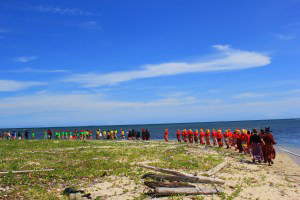
Appalili
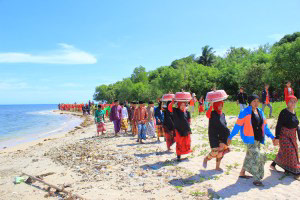
Appalili – encircle the island
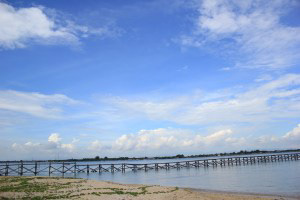
Sanrobengi Island
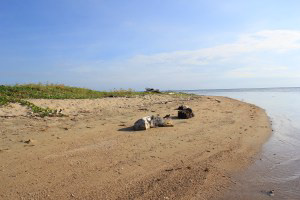
Sanrobengi Island
There are around 7 steps to execute the Patorani Ritual, which are:
Ask for a good day. This step is usually done by the fisherman’s wife towards the elderly of the traditional leader of the area.
Bamboo cutting.
Making Pakaja. Pakaja is Makassar language that means a catching tool to catch flying fishes. Usually it goes along with the bamboo, rotan, coconut leaves and gosse. Gosse is also in Makassar language which means a smell to attract the flying fishes.
Boat cleaning. To scrub and make the boat clean, they use a traditional way with leaves. After that they paint it. As we know, long time ago, boats were using sails not like nowadays with motor engine. The local wisdom says, the cleanest or prettiest boat will have a lot of rezeki (fortune).
Carru-carru procession. It’s filled with prayers in the form of offerings such as banana, cuts of chicken, young coconut, songkol (sticky rice), etc.
Push the boat towards the sea. In this case towards the coral (near the Sanrobengi Island) and once they reach the destination they put the offerings there, in Makassar language it is called parrapo.
Sanrobengi Island. The last parroppo procession will be at the Sanrobengi Island, at a grave of a healer. They have to ask permission towards Sanrobengi (Makassar language). Sanro means healer/witchdoctor and bengi which means night, put together it means the healer at night time. It was said that the healer came from the family of King Luh (Luh is an area at the east part of South Sulawesi) and the healer is able to cure all sorts of illness but it has to be done during night time although the healer is invisible. Because of that, the healer was well known until the land of Bugis. They said that the many Kings of Luh could be healed by Sanrobengi.
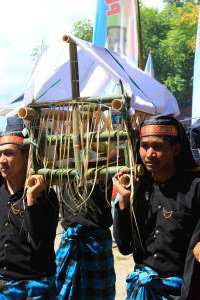
The offerings
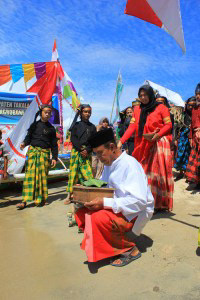
Placing the offerings Placing the offerings

Placing the offerings Placing the offerings
During the Festival Pesona Pulau Sanrobengi 2016, the ritual was simplify into several steps, which are:
Appalili (Makassar language) – It means to go around the island. It is the symbol of the depart process of the Patorani fishermen, starting from April-May and then start sailing from September – the end of October.
Appadongko Patrrappo (Makassar Language) meaning to place the offering. Its purpose is to ask for protection and fortune towards Allah. All offerings are done with the name of Allah. One of the many offering consists of Bente (Makassar language for paddy). The rice paddy is sprinkled which symbolised the hope of evenly spread fortune for the surrounding people.
(The Patorani ritual procession source of information from Bapak haji Abdurahman as Head of Puskesmas Galesong)
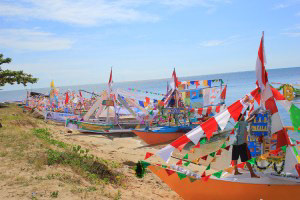
Boat Parade
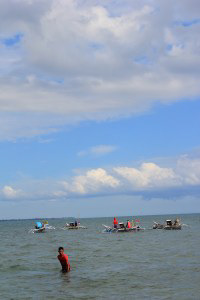
Ketinting boat competition
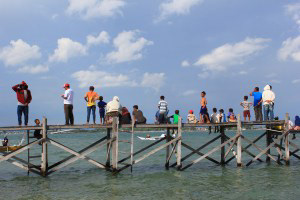
Local people watching the traditional boat competition
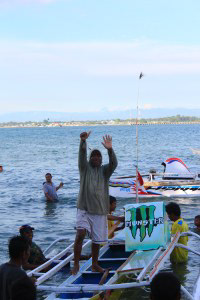
Winner of the traditional boat competition
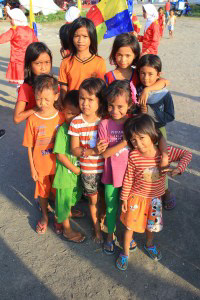
Ketinting boat competition The island children
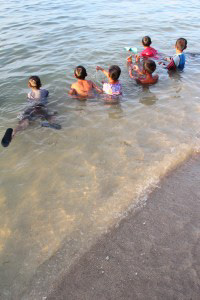
Kids enjoying a bath at the sea
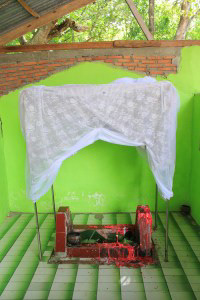
Sanrobengi-the grave of the healer of the night
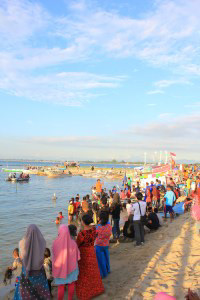
Apalili

The Ambassadors of Takalar Regency
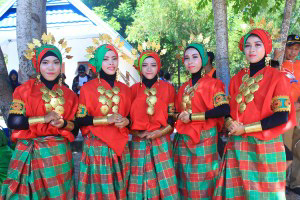
The Bodo Costume and danced the Singara Bulang.
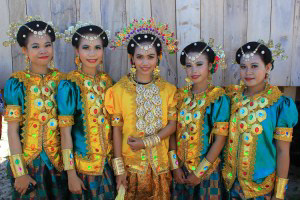
Makassar costume and the beautiful ladies danced the Pakarena.
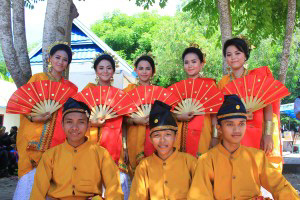
Makassar costume&danced the Tuma’ Biring.
Critics:
The Sanrobengi Island wasn’t clean. The rubbish that came from the sea was scattered everywhere at the island. Also, irresponsible people had thrown rubbish carelessly.
The island was small but the development was wrong. It wasn’t neat and well planned. Therefore, the island looks like it was indeed crying for help and attention.
The Patorani ritual, wasn’t organized and managed well. The visitors should be noted with a guide book or a piece of information to understand the step by step ritual and knowing what is next for the ritual.
For more information you may click the link here: www.indonesia.travel
All photographs are taken by Fiona Callaghan.
Note from The Adventuress:
Always stay as a Conscious Adventurer with The Adventuress spirit of Peace, Love, Adventure, Nature, and Positivity or PLAN+ in short. With that, you wouldn’t want to harm the nature and destroy it. Rather you would want to explore the earth to learn its beauty as your private experience that will teach you to be a better person each day and value the wonderful creation of God.
Peace & Light,
The Adventuress